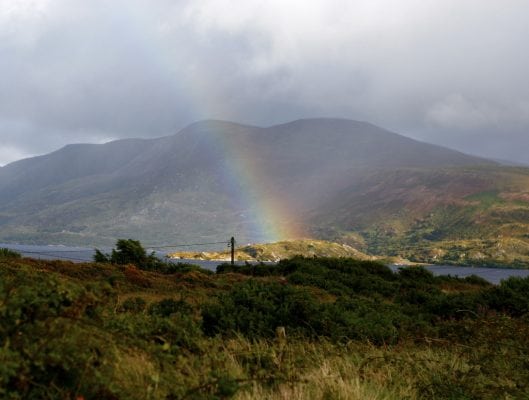- Created: November 5, 2013 10:12 am
- Updated: December 12, 2017 10:59 am
- Distance Instructions
- Distance 0 m
- Time 0 s
- Speed 0.0 km/h
- Min altitude 0 m
- Peak 0 m
- Climb 0 m
- Descent 0 m
Church Island on Lough Currane near Waterville, has the remains of an ancient monastic settlement, including a church, tombs and beehive huts. St. Fionan founded the monastery on Lough Currane in the 6th Century. There is also a later Church built in the 12th century and numerous Altars, Cross Slabs, Pillar Stones and a grave said to be that of St. Fionan himself. The Annals of Inishfallen Monestery in Killarney mention that Amchad, the "anchorite of God" was buried on the island in 1058.
Lough Currane (in Irish: Loch Luíoch) is a lake in Co. Kerry in the south west of Ireland. Waterville village lies on its western shore, on the Atlantic Ocean. The lough is famous for its salmon and trout fly fishing. It covers an area of 2,500 acres (10 km sq) and is 3.5 miles long (2 km) and 2 miles (3.2 km) at the widest point.
Church Island on Lough Currane near Waterville, has the remains of an ancient monastic settlement, including a church, tombs and beehive huts. St. Fionan founded the monastery on Lough Currane in the 6th Century. There is also a later Church built in the 12th century and numerous Altars, Cross Slabs, Pillar Stones and a grave said to be that of St. Fionan himself. The Annals of Inishfallen Monestery in Killarney mention that Amchad, the “anchorite of God” was buried on the island in 1058.
Lough Currane (in Irish: Loch Luíoch) is a lake in Co. Kerry in the south west of Ireland. Waterville village lies on its western shore, on the Atlantic Ocean. The lough is famous for its salmon and trout fly fishing. It covers an area of 2,500 acres (10 km sq) and is 3.5 miles long (2 km) and 2 miles (3.2 km) at the widest point.


